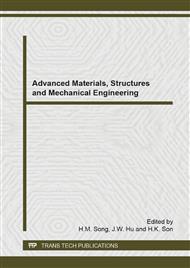p.302
p.310
p.317
p.325
p.330
p.336
p.345
p.349
p.355
Comparison of Horizontal and Vertical Deactivation Force, Length and Superelasticity in Three Commercial NiTi Orthodontic Archwires
Abstract:
Objectives: The aim of this study was to investigate and to compare the deactivation force, deactivation length and superelasticity in horizontal and vertical directions of Nickel-titanium (NiTi) orthodontic archwires made by 3 different manufactures. Materials and methods: The archwires tested were NiTi-OR (Ormco), NiTi-GH (G&H) and NiTi-H (Highland) and were 0.016 x 0.022 inch2 in cross-section and 25 mm in length. The study analysed load-deflection curves from three-point bending tests performed for each type of NiTi wire in vertical (occluso-gingival) direction (0.022” in horizontal dimension) and horizontal (bucco-lingual) direction (0.016” in vertical dimension) at oral temperature (37±10 oC). Statistical Analysis: Descriptive analysis and Kruskal Wallis test were performed to assess differences in deactivation force, deactivation length and superelasticity among the three brands. A p<0.05 was considered as significant. Results: The deactivation forces ranked from low to high were NiTi-GH, NiTi-OR and NiTi-H, 2.09, 2.57 and 2.90 N, respectively in horizontal dimension (occluso-gingival direction) and 3.04, 3.54 and 3.62 N in vertical dimension (bucco-lingual direction), respectively. For the deactivation length, ranking from long to short were NiTi-GH, NiTi-OR and NiTi-H, 1.08, 1.02 and 0.63 mm in horizontal dimension and 1.63, 1.46 and 1.13 mm in vertical dimension, respectively. In regards to superelasticity, NiTi-OR showed the highest superelasticity, 15.37 in horizontal and 9.68 in vertical dimension, followed by NiTi-GH, 9.51 for horizontal and 6.40 for vertical dimension and NiTi-H, 4.12 for horizontal dimension and 2.96 for vertical dimension. Conclusion: Deactivation force was higher in vertical than horizontal dimension and deactivation length was longer in vertical than horizontal dimension. However, the superelasticity was higher in horizontal than vertical dimension, except NiTi-H. The high priced NiTi wire (NiTi-OR) had the most superelasticity following by medium (NiTi-GH) and low priced wires (NiTi H).
Info:
Periodical:
Pages:
330-335
Citation:
Online since:
September 2014
Keywords:
Price:
Сopyright:
© 2014 Trans Tech Publications Ltd. All Rights Reserved
Share:
Citation:


